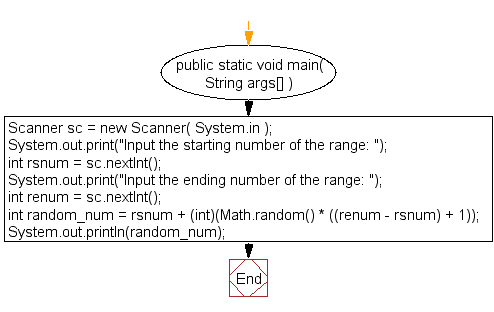
The probability of a value being rejected depends on n. In an uneven distribution (due to the fact that 2^31 is not divisibleīy n). Values from the stated range with perfect uniformity. If it were a perfect source of randomlyĬhosen bits, then the algorithm shown would choose int The hedge "approximately" is used in the foregoing description onlyīecause the next method is only approximately an unbiased source of

The method nextInt(int bound) is implemented by Int values are produced with (approximately) equal Is pseudorandomly generated and returned. NextInt is that one int value in the specified range Returns a pseudorandom, uniformly distributed int valueīetween 0 (inclusive) and the specified value (exclusive), drawn from
Math.random java generator#
Get a cryptographically secure pseudo-random number generator for useīy security-sensitive applications. Instance across threads may encounter contention and consequent Many applications will find the method Math.random() simpler to use. Protected utility method that on each invocation can supply The algorithms implemented by class Random use a However, subclasses of class RandomĪre permitted to use other algorithms, so long as they adhere to the Shown here for the class Random, for the sake of absolute Java implementations must use all the algorithms Guarantee this property, particular algorithms are specified for theĬlass Random. Will generate and return identical sequences of numbers. Seed, and the same sequence of method calls is made for each, they If two instances of Random are created with the same The Art of Computer Programming, Volume 2, Section 3.2.1.) Modified using a linear congruential formula. We can specify a range and all the random numbers will be generated within that range.An instance of this class is used to generate a stream of The () method can return an infinite integer stream of randomly generated numbers. The second random number is: 500 Using ints() method of Random Class Int randomNum2 = randomNumberGenerator(500, 501) //random number between 500 and 501 Int randomNum1 = randomNumberGenerator(500, 2000) //random number between 5 Since nextInt(n) is exclusive of the n value, so our method will also be exclusive of the max value. If it generates 24(the largest value), then 24 + min will be equal to 31, which is the max value. If it generates 0(the lowest value), then 0 + min will be equal to 7. So, nextInt(24) will generate a random number between 0 and 24. Let's try to understand this formula.įor example, if max = 31 and min = 7, then (max-min) will be equal to 24. We will use the formula nextInt(max-min) + min. We will use this method to build our own random number generator method.

("The second random number is: " + randomNum2) ("The first random number is: " + randomNum1) If we pass a positive parameter n to this method then it will return a random number in the range 0 to n(0 inclusive, n exclusive). The nextInt() method can be used to generate a random integer. The second random number is: 2199 Using nextInt() method of Random class Int result = (int)(randomNum * (max - min)) + min
Math.random java code#
The above code using the nextDouble() method is shown below. All these methods will generate a random decimal number between 0 and 1. We can also use the nextDouble() and nextFloat() methods of the Random class in place of the Math.random() method. Int r2 = randomNumberGenerator(2199, 2200) //random number between 21 Int r1 = randomNumberGenerator(5, 105) //random number between 5 and 105 Int randomNum = (int)(r * (max - min)) + min Public static int randomNumberGenerator(int min, int max)


But remember that Math.random() does not returns 1, but instead, a value that is slightly less than 1(say 0.999999).And if Math.random() generates 1(the highest value), then the formula will give 1 * (max-min) + min, which is equal to max.This formula works because if Math.random() generates 0(the lowest value), then (0 * (max-min)) + min will be equal to min.We will use the formula (Math.random() * (max-min)) + min in our method.We can use this method to build our own random method which will take the minimum and the maximum range values and it will return a random number within that range. The random() method of the Math class is used to generate a decimal value between 0 and 1(0 inclusive, 1 exclusive).
Math.random java how to#
In this tutorial, we will learn how to leverage the inbuilt Java methods to implement a random number generator method for a given range. Java provides a few methods to generate random numbers, but it is quite tricky to generate a random number in a specific range.


 0 kommentar(er)
0 kommentar(er)
